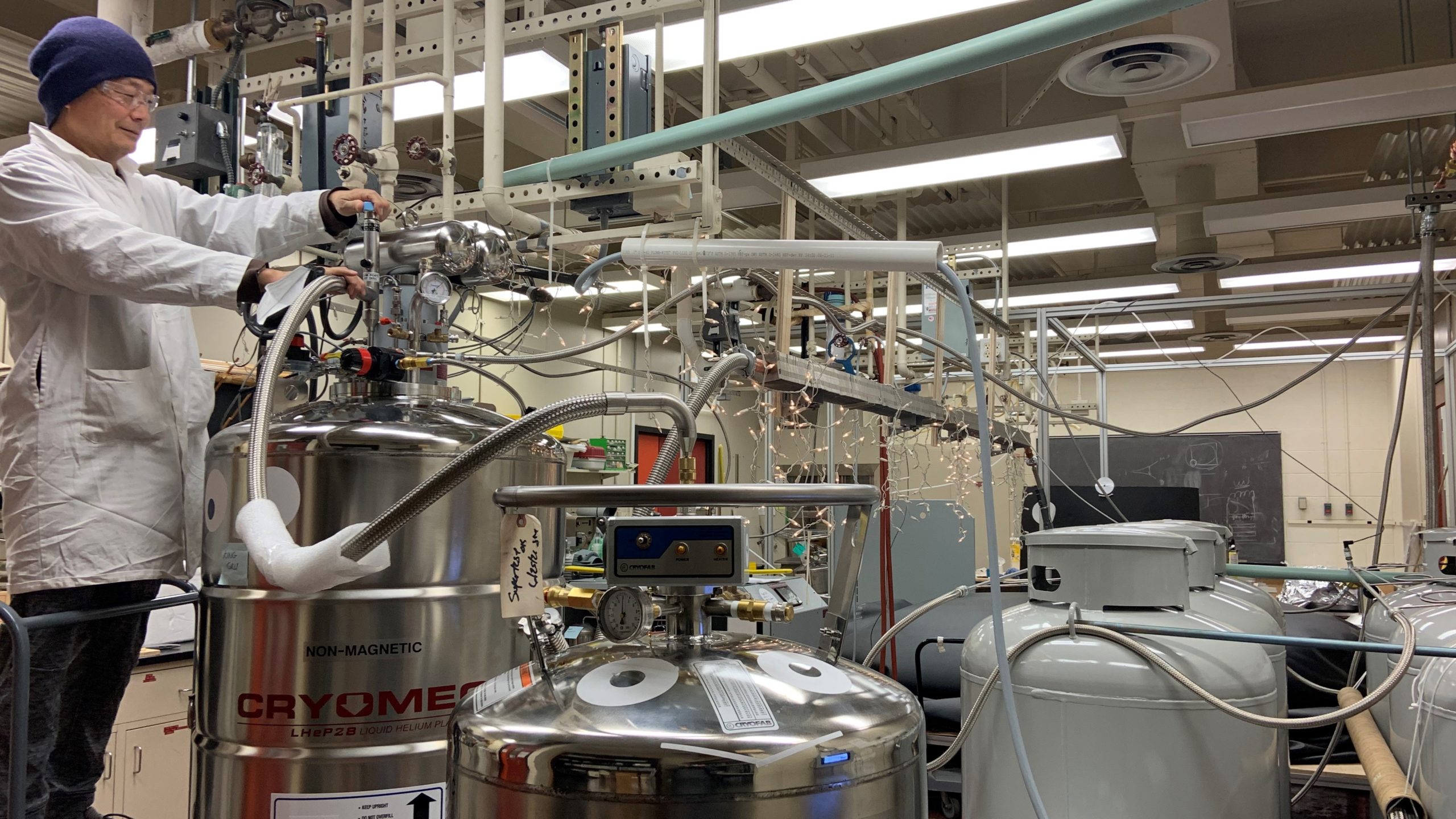Liquid helium has many uses in medicine and research. One particular use is as superconducting magnets and low temperature cryostats, which is what it is used for in Professor Michael Neidig’s research at the chemistry department at the University of Rochester. Professor Neidig, the department, and the Nuclear Magnetic Resonance (NMR) facility would collectively spend approximately $6,000 per month on tanks of liquid helium, until May of this year when the department brought online a helium recovery system, with a 90% recovery rate.
This system was designed by Senior Lab Engineer Ray Teng. The prototype for the system had been in the works since early 2020, but the implementation plans were delayed due to the COVID-19 pandemic. Ray conducted some design research by visiting Yale University’s Chemical and Biophysical Instrumentation Center, where a similar system has been installed. Taking notes and improvising on what others had already done, Ray was able to come up with his own system design. Professor Neidig received funding from the National Institute of Health to build the system, for which the total cost of development and installation was approximately $285,000. The system is operated and maintained by Ray together with Tessa Baker, Terry O’Connell and members of the Neidig group in the Department of Chemistry.
The department currently uses liquid helium in four different processes: Magnetic Circular Dichroism (MCD) spectroscopy, Nuclear Magnetic Resonance (NMR) facilities, Mossbauer Spectroscopy and Electron Paramagnetic Resonance (EPR) spectroscopy with 85%, 20%, 2.5% and 2.5% liquid helium usage respectively. From these four setups, liquid helium is recovered via copper pipes that run along the hallway to a room containing a helium gas recovery bag. The system of copper lines was developed in-house by Ray instead of outsourcing the project to a third party which is usually the case for such a large system. This resulted in huge cost savings to the University. Utilizing O-ring compression fittings as opposed to the conventional solder connections, Ray was able to eliminate potential contaminants and install the system almost entirely by himself.
The helium recovery bag can hold up to 300 cubic feet of helium gas. Once the bag is full, it trips a laser that starts the compressor to remove the helium from the bag which takes about 30 minutes. The removed gas is then cleaned and stored in six storage tanks with each tank having a capacity of 435 cubic feet. The compressed helium is then transferred via a stainless-steel pipe to an automatic purifier where it is further cleaned and sent to a helium liquefier. The purifier produces 28 liquid liters of helium per day. After the helium is liquefied, it is stored in liquid helium storage dewars, each having a capacity of 100 liters. These dewars can be pushed to the instruments when needed and thus the cycle continues.
The system currently has a 90% recovery rate but the team hopes to achieve 95%. The system is constantly being worked upon with improvements made almost every week. By having an in-house helium recovery system not only has the department saved money by eliminating the need to purchase helium tanks every week but it has also created a more reliable supply of liquid helium; there are often shortages of commercial liquid helium supply causing country-wide shipping delays. The team continues to improve the system and hopes to maintain it as a sustainable source of liquid helium at the University.
Written by Hanyia Ahmed, Class of 2022
Photo Above: Ray Teng, Senior Lab Engineer, at the “Helium Highway” – the name of the area where the valves for the copper pipe system are regulated

